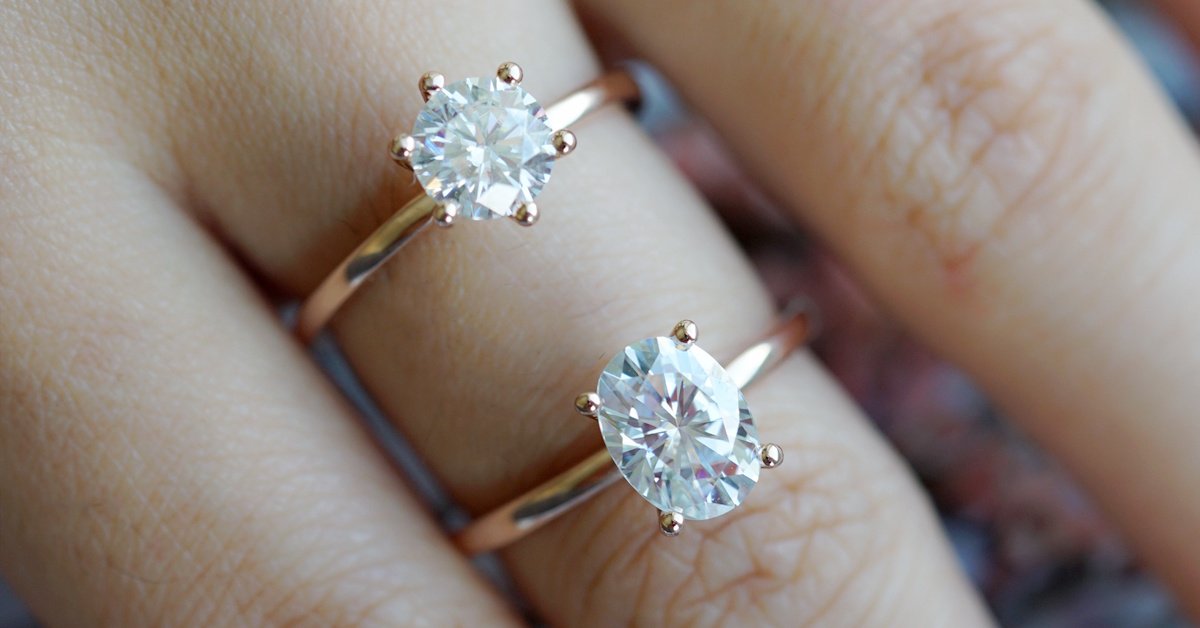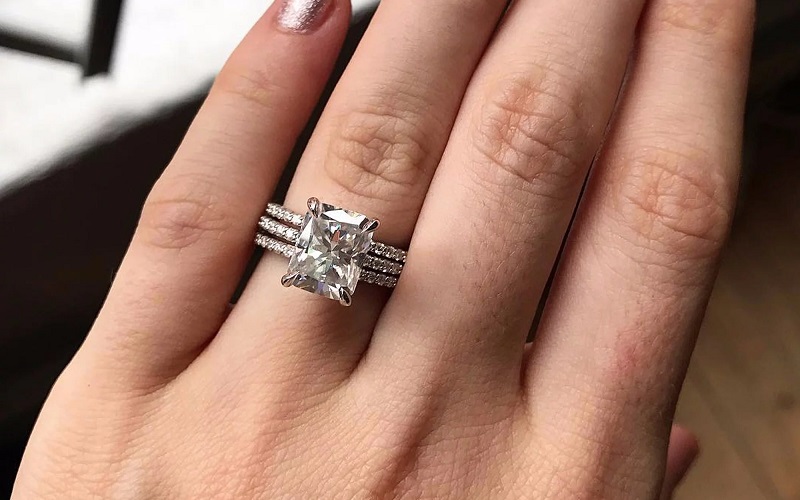Moissanite Rings & its various colors
Moissanite is a beautiful gem having a rich history along with some good qualities as well. Similar to diamonds, the Moissanites also have a huge range of shades ranging from clear and colorless to the brown and green stones. But these are very much pocket friendly whereas diamond and only clear stones are sold at premium rates. Also, there are various processes available that helps to change the appearance of the stones and as a result, offer a wide range of fancy colors. Though a lot of people are choosing Moissanite Rings for weddings or engagements, but it is important to know about its various shades since the color plays a very vital role and is also considered to be an essential component as well.
Do the Moissanites get graded for colors?
The Gemological Survey of America, popularly known as GIA, was founded in the year of 1931 and is a nonprofit organization doing various researches along with providing standards about various precious stones and gems. Initially created by the GIA during the year of 1940, the famous 4 C’s i.e. cut, color, clarity, and carat weight are widely used as the industry standards especially for grading diamonds.
Based on the alphabetical scale, the Diamonds are graded for colors, whereas the grade representing the most colorless diamond is grade “D”. Once you start moving through E, F, G, and so on, the clearness of the diamond decreases, and it slowly starts developing tinge of yellow or brown. The three major types are as per the follows:
- Colorless- D, E, F
- Near Colorless- G, H, I
- Slightly tinted- J, K
Currently, GIA is also grading both earth mined as well as synthetic or manmade diamonds on this same scale of color, but doesn’t grade any of the simulated diamonds. Therefore, this means that they also won’t grade Moissanite for color or any of the 3 C’s and in fact, they also won’t grade Morganite, White Sapphire, Cubic Zirconia and similar alternatives for diamonds. Still, it is often seen that the jewelers are using the rating scale of GIA unofficially to communicate about the clarity of the stone. For instance, they might rate one of the Moissanite stone “D” and on the other hand, the other one more than “I”.

Are the Moissanites naturally colorless?
Like the diamonds, the color of the Moissanites ranges from the clear and colorless to the shade of yellow or brown whereas Moissanites stones with maximum clarity are similar to the GIA’s rating of “D” for the diamonds, i.e. the rating given by them for the clearest ones. The maximum sale is recorded on the clearest Moissanites.
Apart from being easily available, the majority of the Moissanites like the diamonds possess a small tint of yellow color. Though unnoticeable and faint in a few, it is obvious in others.
Do the colors of Moissanite change with time?
You may rest assured that the color of Moissanites does not change with time. It is equally durable and stable like the diamonds. Though the brilliance of the ring could become dull along with diminishing with time, especially due to building up of oil and dirt, still it can be restored to its original look by simply cleaning it.
Do the Moissanites get cloudy?
Since it ranges around 9.25 on the Mohs scale of hardness and is a stable stone as well, it never gets cloudy no matter whatever is its age. Thus, it is extremely hard and scratch resistant as well. Although the scratches might dull the appearance of the Moissanite Rings, but be rest assured since its hardness protects the entire ring from such damages.
How are the Moissanites colored?
Apart from the clear and colorless Moissanite Stones majorly used for engagement purposes, nowadays there are various colored options available as well. A process known as the Chemical Vapor Deposition or CVD helps for coating the bottom half of the stone with a bonding agent and it is also followed by a thin layer of covering. This coloring process basically helps the manufacturers in applying colors especially the yellow on in order to meet the need and the desires of the customers. Through this process, for instance, a yellow ring can become a gold ring or a green ring or a brown ring. The coating applied is permanent and there is no chance of fading. Also, instead of using chemical or ultrasonic cleaners, it is highly recommended to clean it by using a soft-bristled toothbrush with warm water and dish soap as well.
What are the available colors of Moissanites?
Moissanites are available in various colors and few of the shades include green, yellow, pink, purple, blue, gold, brown, and grey. A few of the fancy colored Moissanite Stones with the examples are listed below:
Loose Fancy Colored Moissanites-
These are lost Moissanite stones that can be set as per your choice. Not only beautiful and reasonable, but it also has a wide range of color options as per the following:
- Canary Yellow Moissanite- 0.80 Carat & Round Shape
- Brown Moissanite- 1.10 Carat
- Intense Green Moissanite- 2.31 Carat & Round Shape
- Green Moissanite- 1.40 Carat & Round Brilliant Shape
- Blue Moissanite- 1.65 Carat & Round Brilliant Shape
- Intense Blue Moissanite- 3.67 Carat & Round Brilliant Shape
- Pink Moissanite- 1.41 Carat & Round Brilliant Shape
- Black Moissanite- 1.10 Carat & Round Brilliant Shape
Also, there are a few fancy colored options available at a very affordable price especially for the ones interested in a pre-assembled or a ready to go ring, the options are as follows:
- 1 carat Pink Moissanite Solitaire with white Sapphire accents on white gold.
- .5 carat Pink Moissanite Solitaire on white gold.
- 1 carat Persian Blue Moissanite Solitaire with white Sapphire accents on white gold.
- 1 carat Blue Moissanite Solitaire with white Sapphire accents on white gold.
Therefore, since the Moissanites are much reasonable if compared to the diamonds, you may easily go ahead for multiple Moissanite rings in different shades and styles matching your outfit and mood and that too at a fraction price of a diamond.




